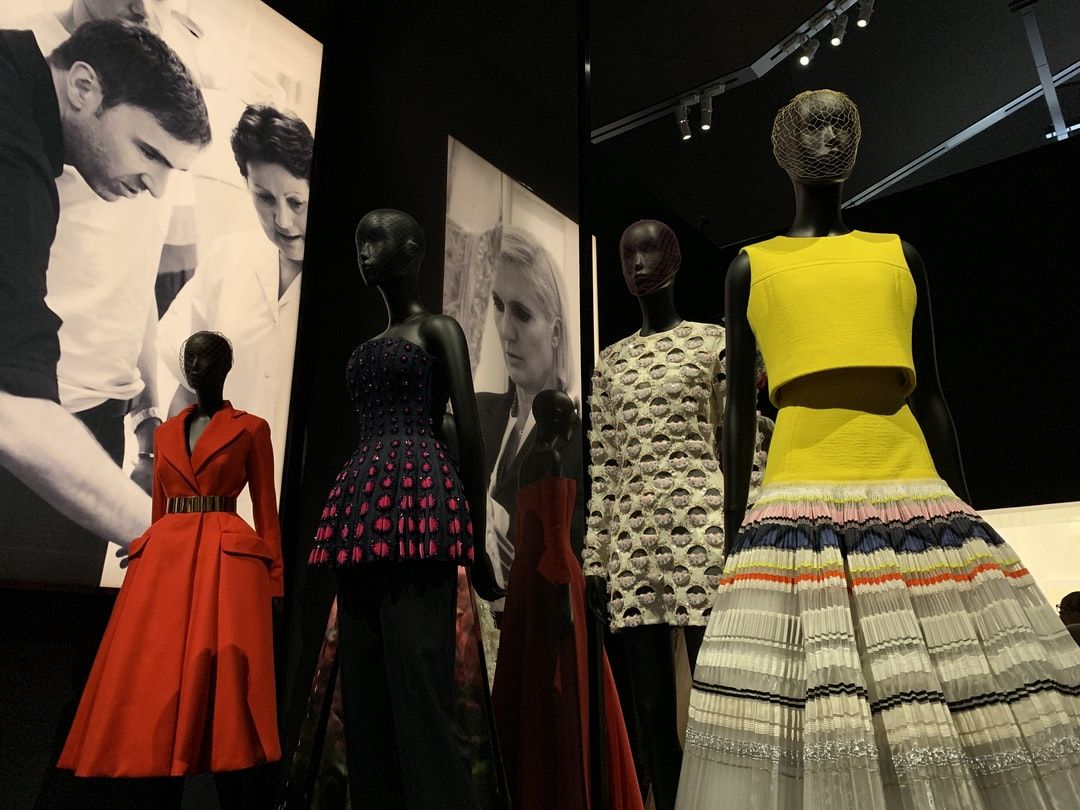But changing the business model is not easy, are we able to accelerate the pace of transformation using digital technologies? Here are a few potentials.
1. Marketing Campaigns and Fashion Shows going virtual
In Mckinsey’s 2019 Apparel CPO Surve, 83% of respondents believed that physical samples would be used less often than virtual samples by 2025. In fact, the shift is taking place faster than we anticipated due to COVID-19. For the big luxury brands, many fashion shows have gone virtual in creative ways. Moschino created a “doll fashion show”, cute doll-size garments were showcased on a runway by marionette dolls, saving the materials and resources that would be needed to host a real-life runway. While that didn’t use AI, it shows that even the luxury brands that build most of their brand value in customer experience, prestigious runway shows, are willing to shift to the virtual world and do more with less.
With AI, we’re able to make a 3D digital fashion model. (In my opinion, they look even more visually appealing than human models.) The Fabricant is one such —it is the “world’s first digital fashion house”, reporting that digital samples replacing physical garments during design and development phases dramatically reduce the brand’s carbon footprint up to 30%. Collaborating with well-known brands such as Puma, Adidas, and Aape, it could reduce the CO2 pollution, water wastage and toxic chemical pollution resulting from the production of clothes for advertisement, which would be wasted in traditional practices as they couldn’t be resold to customers.
2. Virtual fitting room and better customisation reducing returns and enhancing customer experience
A more implicit source of pollution is the delivery part in the value chain, for instance, in China where shipping is extremely efficient and low-cost, returning purchased products has become a better choice than not purchasing them in the first place if you’re unsure about how well they fit. Unnecessary pollution results.
Extending from the previous potential, as 3D virtual model technologies are made available, virtual fitting rooms for every individual soon emerge. AI could help us measure our size precisely and adjust the digital models accordingly. MySize has developed such technology to make these possible with just a smartphone camera, helping customers to purchase the correct sizes of clothing when shopping online.
Furthermore, recommender systems and AI-based personalised styling are upgrading customers’ online shopping experiences. Stitch Fix creates a Style Profile for customers using an initial Style Quiz, combining with data points from customers’ personal characteristics, clothing characteristics, post-Fix feedback, historical interactions with the service and merchandise data to develop predictive algorithms. This streamlines the traditionally frustrating experience of searching online for the clothes that fit your style, reducing the chance of dissatisfaction and return of unsuitable clothes.
3. Propelling the second-hand marketTo embrace the principles of the circular economy and extend the product life-cycle, more Gen-Zs are embracing the second-hand clothing market, which is expected to expand rapidly from $24 billion (in 2018) to $51 billion by 2023. AI has the potential to improve customer experiences in the used clothes market from a variety of different angles, including more reliable pricing, better-personalised user experiences, better styling services and of course, as we’ve introduced before, more precise sizing. A project by RISE allows AI to study ads of clothes to develop its own pricing model, learning from massive ads for pre-owned products, it recognises the features associated with specific price levels, helping it to build reliable models for price predictions. Trusted pricing in turn allows more customers to participate confidently in the second-hand clothing market.
Let’s explore how thredUP is shaking up the industry: AI services provided by Vue.ai were used to process images using image recognition, to provide accurate pricing and tagging based on patterns, colour, fashion edginess, which made their processing centre much more efficient, making it possible to process 100K unique items every day. To further reduce waste and return, thredUp provides a box service that sends 10 items that are hand-picked by a stylist. AI is used by the stylists to help them fulfil orders at high speed and accuracy, based on the consumer’s previous history, as well as fashion trends.
4. Rental Fashion meets AI
Increasing clothing utilisation is identified as one of the ambitions for a more sustainable textile economy by the Circular Fiber Initiative. We all know how we spend a hundred pounds on the most gorgeous evening gown for our best friends’ wedding and the next time we wear it is 10 years later. Buying clothes for special occasions is a pain for our wallet as well as the planet.
Rental fashion is a solution to save you the expenses of purchasing expensive garments that are almost like single-use, as well as saving millions of under-utilised clothes. In late 2021, Rent the Runway — a rental fashion e-commerce platform went public, marking an important milestone in the rental fashion market. The platform works on a membership subscription-based model, allowing customers to rent clothes for a flat monthly price. Its Director of Engineering, Mike Liberant elaborated on how AI was integrated into its warehouses. In order to scale up the system and make it faster to free up inventories so customers can rent them, robotic arms need to automatically recognise the materials and corresponding cleaning methods of returned clothes when sorting them. Minimal inbound processing time is achieved, therefore maximising the reuse potential of clothes and their benefits to the environment.
5. AI sales prediction prevents stockpilingThe last potential is probably the most well-known and widely adopted practice in the industry. Stockpiling is the fast fashion industry creates enormous waste as fashion trends change day by day. One of the most obvious use cases of Artificial Intelligence in this aspect is to use advanced data analytics and machine learning sales forecasting to better predict sales, clothing trends, customer behaviour and reduce the number of unsold clothes each season. Being cost-saving and environmentally friendly at the same time, much research has been devoted to this area to make it flawless.
Many of the potentials I’ve highlighted are complementary to each other. Finding the common ground between technologies, fashion and the environment is ought to transform the worlds’ second-largest polluter and make sure appearance and sustainability can be achieved at the same time.


